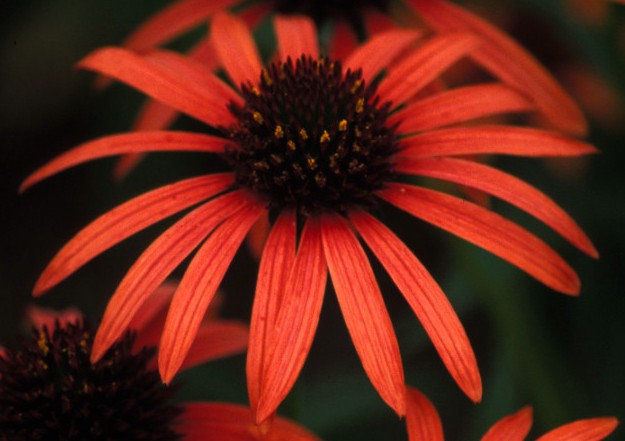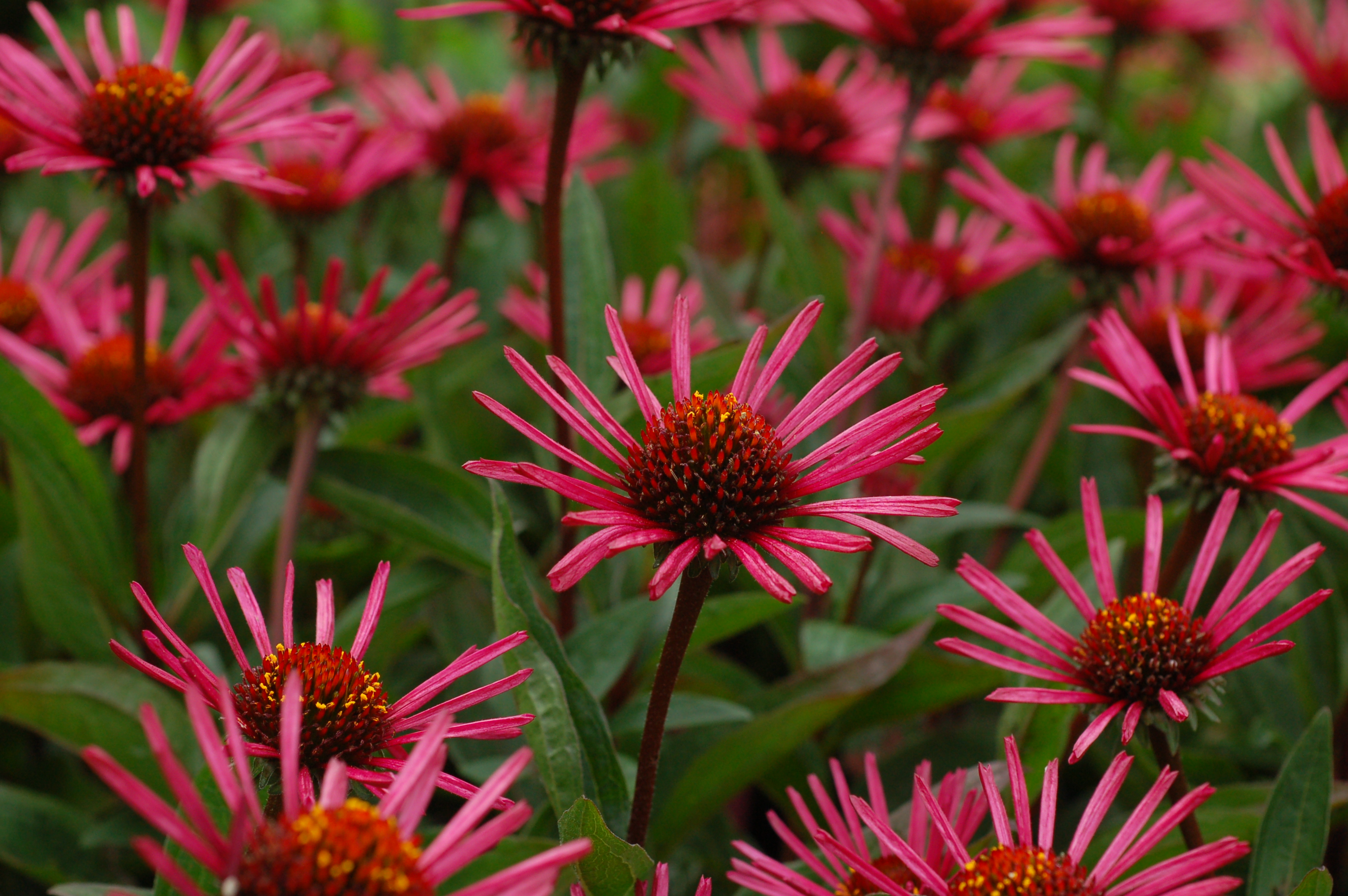Growing Tips & Misconceptions about Coneflowers (echinacea)
Coneflowers ARE hardy! It's all about how where you plant them and how you grow them.
I’ve been called the coneflower queen. My career led me right into the mouth of this coneflower volcano. As much fun as this has been, I’m really tired of hearing the same comment over and over. Folks are saying the new coneflowers are not winter hardy.

Let's clear up a few things:
Does anyone read botanical literature anymore? No offense, but most of the folks talking smack on the Internet are not trained horticulturists. We surf the web just to see what’s being said. We also try and educate people about the real reason their precious, $25 coneflower died last winter. Kudos to Dan Heims from Terra Nova Nurseries for writing a fantastic article, Echinacea: Surviving Old Man Winter, talking about coneflowers in Grower Talks magazine. I should have written that article. I bet Dan wrote it because he was tired of defending the coneflower too.
Echinacea purpurea (purple coneflower), the traditional pink or white petaled coneflower, native to the eastern half of North America is hardy from the deep southern tip of Florida and Texas to the most northern tip of Ontario, Canada. If that’s the case – how is it that this plant could have hardiness issues?
Once established, they can survive many horrific winters. Their taproot stores food and helps the plant to overwinter. I don’t advise planting a young Echinacea purpurea much beyond July. That way, the plant has time to let its taproot grow deep.
This is one of those plants that needs to be sold in the Summer – before or when it’s in bloom, not after.
Echinacea paradoxa (Bush’s purple coneflower), on the other hand, has droopy, yellow petals–hence the paradox–a fibrous root system and is native to Mid Western prairies where the soil is rich and well-drained and the winters are pretty dang cold. E. paradoxa is hardy from zones 5-8. Having a fibrous root system means this plant spends the first year making roots. It shouldn’t bloom the first year, but it often does – especially in nursery soils where it gets much more fertilizer than it would in the wild.
Note to nursery growers reading this:
Please cut off the first blooms, especially of E. paradoxa and hybrid selections. We know it’s hard and you so desperately want to sell them as soon as you can because they are so hot right now, but if you sell this plant with one or two blooms and tiny little crown – it’ll surely die the first winter. Even worse – if you try and overwinter this same plant in a hoop house, chances are – unless you keep it completely dry – it’ll die too and then you’ll be calling us because they are not hardy for you. It’s all about winter wetness folks – and if there are no roots to absorb the moisture – the plant rots.
It’s that easy!
Combine E. purpurea and E. paradoxa and– voilá– you get the lovely shades of orange we’ve been seeing the past few years. Dr. Jim Ault of The Chicago Botanic Garden was the first to introduce a single orange, and then came the Saul Brothers of ItSaul Plants in Georgia. These were horticultural breakthroughs. AB-Cultivars in the Netherlands and Terra Nova Nurseries soon followed with the first double pink and orange blooms.
These breeders have changed the way the World sees coneflowers. They have also interrupted the notion that coneflowers are really hardy and last forever.
Most coneflowers don’t last forever. E. tennesseensis will last more than 8 years but rarely do other species. It’s just the nature of the beast.

What people don’t realize is coneflowers are quite promiscuous. In other words, they seed all over.
Often, there are so many seedlings popping up everywhere that gardeners don’t realize the original plant is gone. Once you plant one of these special, new orange selections, you get a reality check that coneflowers don’t always live forever. Often, the original plant, no matter what selection, will slowly decline after being in the garden for 7or so years, then one day, it will be gone. You’ll often get the seedlings you did with straight E. purpurea, but they won’t be orange – they’ll be pink or white and then you’ll know when you’ve lost the original plant. That’s when the complaints come in about them not being hardy. Or people call saying they have a new plant because their orange coneflower mutated to light pink!
They don’t like our answer…
There’s nothing non-hardy about these hybrids if they are planted in well-drained soil and allowed to establish. Clay soil can be death. Planting too late can also be a problem.
Our super knowledgable horticulturist friend in South Carolina, Jim Martin says, “Echinacea, oh- you mean those annuals?” And then he lets out this seriously haunting laugh. For him, they are annual, but he loves them nonetheless. I know if a selection ever makes it over the winter on the S.C. coast, it will be a hit because Jim will talk about it wherever he goes! In coastal S.C., it’s obviously not about winter hardiness – it’s about lack of winter and poor soil or lack of soil when you reach the true coast.
Winter wetness and poor drainage can just as easily kill a plant in the garden – especially orange ones. With the addition of the E. paradoxa gene – the plants are a bit more susceptible to winter rot.
OK – here’s the recipe for success with these fantastic, new hybrids:
If you’re a gardener:
– Plant ‘em early
– Plants ‘em high if you have poor drainage
– Don’t be afraid to tip the pot in the nursery and look for roots.
- Your coneflowers and your wallet will thank you.
If you’re a grower:
– Cut off the first blooms of a new crop so they can make a larger crown and roots
– Make sure you keep all coneflowers dry in the winter months
Your coneflowers, your budget, and your suppliers will thank you.
You can be successful, as a grower or as a gardener, with all of these new, very coveted selections if you follow these simple rules. And when you hear a friend or customer say, “Those new coneflowers are not winter hardy”, please respond with, “Oh, contraire, but they are. Let me tell you what I’ve learned.”
We would greatly appreciate a little help spreading the word.